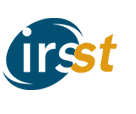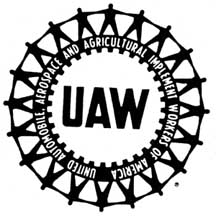Toxicology References
Andersen, KE and HI Maibach. 1985. Contact allergy predictive tests on guinea pigs. Chap. 14 in Current Problems in Dermatology. Basel: Karger.
Ashby, J and RW Tennant. 1991. Definitive relationships among chemical structure, carcinogenicity and mutagenicity for 301 chemicals tested by the US NTP. Mutat Res 257:229-306.
Barlow, S and F Sullivan. 1982. Reproductive Hazards of Industrial Chemicals. London: Academic Press.
Barrett, JC. 1993a. Mechanisms of action of known human carcinogens. In Mechanisms of Carcinogenesis in Risk Identification, edited by H Vainio, PN Magee, DB McGregor, and AJ McMichael. Lyon: International Agency for Research on Cancer (IARC).
—. 1993b. Mechanisms of multistep carcinogenesis and carcinogen risk assessment. Environ Health Persp 100:9-20.
Bernstein, ME. 1984. Agents affecting the male reproductive system: Effects of structure on activity. Drug Metab Rev 15:941-996.
Beutler, E. 1992. The molecular biology of G6PD variants and other red cell defects. Annu Rev Med 43:47-59.
Bloom, AD. 1981. Guidelines for Reproductive Studies in Exposed Human Populations. White Plains, New York: March of Dimes Foundation.
Borghoff, S, B Short and J Swenberg. 1990. Biochemical mechanisms and pathobiology of >a-2-globulin nephropathy. Annu Rev Pharmacol Toxicol 30:349.
Burchell, B, DW Nebert, DR Nelson, KW Bock, T Iyanagi, PLM Jansen, D Lancet, GJ Mulder, JR Chowdhury, G Siest, TR Tephly, and PI Mackenzie. 1991. The UPD-glucuronosyltransferase gene superfamily: Suggested nomenclature based on evolutionary divergence. DNA Cell Biol 10:487-494.
Burleson, G, A Munson, and J Dean. 1995. Modern Methods in Immunotoxicology. New York: Wiley.
Capecchi, M. 1994. Targeted gene replacement. Sci Am 270:52-59.
Carney, EW. 1994. An integrated perspective on the developmental toxicity of ethylene glycol. Rep Toxicol 8:99-113.
Dean, JH, MI Luster, AE Munson, and I Kimber. 1994. Immunotoxicology and Immunopharmacology. New York: Raven Press.
Descotes, J. 1986. Immunotoxicology of Drugs and Chemicals. Amsterdam: Elsevier.
Devary, Y, C Rosette, JA DiDonato, and M Karin. 1993. NFkB activation by ultraviolet light not dependent on a nuclear signal. Science 261:1442-1445.
Dixon, RL. 1985. Reproductive Toxicology. New York: Raven Press.
Duffus, JH. 1993. Glossary for chemists of terms used in toxicology. Pure Appl Chem 65:2003-2122.
Elsenhans, B, K Schuemann, and W Forth. 1991. Toxic metals: Interactions with essential metals. In Nutrition, Toxicity and Cancer, edited by IR Rowland. Boca-Raton: CRC Press.
Environmental Protection Agency (EPA). 1992. Guidelines for exposure assessment. Federal Reg 57:22888-22938.
—. 1993. Principles of neurotoxicity risk assessment. Federal Reg 58:41556-41598.
—. 1994. Guidelines for Reproductive Toxicity Assessment. Washington, DC: US EPA: Office of Research and Development.
Fergusson, JE. 1990. The Heavy Elements. Chap. 15 in Chemistry, Environmental Impact and Health Effects. Oxford: Pergamon.
Gehring, PJ, PG Watanabe, and GE Blau. 1976. Pharmacokinetic studies in evaluation of the toxicological and environmental hazard of chemicals. New Concepts Saf Eval 1(Part 1, Chapter 8):195-270.
Goldstein, JA and SMF de Morais. 1994. Biochemistry and molecular biology of the human CYP2C subfamily. Pharmacogenetics 4:285-299.
Gonzalez, FJ. 1992. Human cytochromes P450: Problems and prospects. Trends Pharmacol Sci 13:346-352.
Gonzalez, FJ, CL Crespi, and HV Gelboin. 1991. cDNA-expressed human cytochrome P450: A new age in molecular toxicology and human risk assessment. Mutat Res 247:113-127.
Gonzalez, FJ and DW Nebert. 1990. Evolution of the P450 gene superfamily: Animal-plant “warfare,” molecular drive, and human genetic differences in drug oxidation. Trends Genet 6:182-186.
Grant, DM. 1993. Molecular genetics of the N-acetyltransferases. Pharmacogenetics 3:45-50.
Gray, LE, J Ostby, R Sigmon, J Ferrel, R Linder, R Cooper, J Goldman, and J Laskey. 1988. The development of a protocol to assess reproductive effects of toxicants in the rat. Rep Toxicol 2:281-287.
Guengerich, FP. 1989. Polymorphism of cytochrome P450 in humans. Trends Pharmacol Sci 10:107-109.
—. 1993. Cytochrome P450 enzymes. Am Sci 81:440-447.
Hansch, C and A Leo. 1979. Substituent Constants for Correlation Analysis in Chemistry and Biology. New York: Wiley.
Hansch, C and L Zhang. 1993. Quantitative structure-activity relationships of cytochrome P450. Drug Metab Rev 25:1-48.
Hayes AW. 1988. Principles and Methods of Toxicology. 2nd ed. New York: Raven Press.
Heindell, JJ and RE Chapin. 1993. Methods in Toxicology: Male and Female Reproductive Toxicology. Vol. 1 and 2. San Diego, Calif.: Academic Press.
International Agency for Research on Cancer (IARC). 1992. Solar and ultraviolet radiation. Lyon: IARC.
—. 1993. Occupational Exposures of Hairdressers and Barbers and Personal Use of Hair Colourants: Some Hair Dyes, Cosmetic Colourants, Industrial Dyestuffs and Aromatic Amines. Lyon: IARC.
—. 1994a. Preamble. Lyon: IARC.
—. 1994b. Some Industrial Chemicals. Lyon: IARC.
International Commission on Radiological Protection (ICRP). 1965. Principles of Environmental Monitoring Related to the Handling of Radioactive Materials. Report of Committee IV of The International Commission On Radiological Protection. Oxford: Pergamon.
International Program on Chemical Safety (IPCS). 1991. Principles and Methods for the Assessment of Nephrotoxicity Associated With Exposure to Chemicals, EHC 119. Geneva: WHO.
—. 1996. Principles and Methods for Assessing Direct Immunotoxicity Associated With Exposure to Chemicals, EHC 180. Geneva: WHO.
Johanson, G and PH Naslund. 1988. Spreadsheet programming - a new approach in physiologically based modeling of solvent toxicokinetics. Toxicol Letters 41:115-127.
Johnson, BL. 1978. Prevention of Neurotoxic Illness in Working Populations. New York: Wiley.
Jones, JC, JM Ward, U Mohr, and RD Hunt. 1990. Hemopoietic System, ILSI Monograph, Berlin: Springer Verlag.
Kalow, W. 1962. Pharmocogenetics: Heredity and the Response to Drugs. Philadelphia: WB Saunders.
—. 1992. Pharmocogenetics of Drug Metabolism. New York: Pergamon.
Kammüller, ME, N Bloksma, and W Seinen. 1989. Autoimmunity and Toxicology. Immune Dysregulation Induced By Drugs and Chemicals. Amsterdam: Elsevier Sciences.
Kawajiri, K, J Watanabe, and SI Hayashi. 1994. Genetic polymorphism of P450 and human cancer. In Cytochrome P450: Biochemistry, Biophysics and Molecular Biology, edited by MC Lechner. Paris: John Libbey Eurotext.
Kehrer, JP. 1993. Free radicals as mediators of tissue injury and disease. Crit Rev Toxicol 23:21-48.
Kellerman, G, CR Shaw, and M Luyten-Kellerman. 1973. Aryl hydrocarbon hydroxylase inducibility and bronochogenic carcinoma. New Engl J Med 289:934-937.
Khera, KS. 1991. Chemically induced alterations maternal homeostasis and histology of conceptus: Their etiologic significance in rat fetal anomalies. Teratology 44:259-297.
Kimmel, CA, GL Kimmel, and V Frankos. 1986. Interagency Regulatory Liaison Group workshop on reproductive toxicity risk assessment. Environ Health Persp 66:193-221.
Klaassen, CD, MO Amdur and J Doull (eds.). 1991. Casarett and Doull´s Toxicology. New York: Pergamon Press.
Kramer, HJ, EJHM Jansen, MJ Zeilmaker, HJ van Kranen and ED Kroese. 1995. Quantitative methods in toxicology for human dose-response assessment. RIVM-report nr. 659101004.
Kress, S, C Sutter, PT Strickland, H Mukhtar, J Schweizer, and M Schwarz. 1992. Carcinogen-specific mutational pattern in the p53 gene in ultraviolet B radiation-induced squamous cell carcinomas of mouse skin. Cancer Res 52:6400-6403.
Krewski, D, D Gaylor, M Szyazkowicz. 1991. A model-free approach to low-dose extrapolation. Env H Pers 90:270-285.
Lawton, MP, T Cresteil, AA Elfarra, E Hodgson, J Ozols, RM Philpot, AE Rettie, DE Williams, JR Cashman, CT Dolphin, RN Hines, T Kimura, IR Phillips, LL Poulsen, EA Shephare, and DM Ziegler. 1994. A nomenclature for the mammalian flavin-containing monooxygenase gene family based on amino acid sequence identities. Arch Biochem Biophys 308:254-257.
Lewalter, J and U Korallus. 1985. Blood protein conjugates and acetylation of aromatic amines. New findings on biological monitoring. Int Arch Occup Environ Health 56:179-196.
Majno, G and I Joris. 1995. Apoptosis, oncosis, and necrosis: An overview of cell death. Am J Pathol 146:3-15.
Mattison, DR and PJ Thomford. 1989. The mechanism of action of reproductive toxicants. Toxicol Pathol 17:364-376.
Meyer, UA. 1994. Polymorphisms of cytochrome P450 CYP2D6 as a risk factor in carcinogenesis. In Cytochrome P450: Biochemistry, Biophysics and Molecular Biology, edited by MC Lechner. Paris: John Libbey Eurotext.
Moller, H, H Vainio and E Heseltine. 1994. Quantitative estimation and prediction of risk at the International Agency for Research on Cancer. Cancer Res 54:3625-3627.
Moolenaar, RJ. 1994. Default assumptions in carcinogen risk assessment used by regulatory agencies. Regul Toxicol Pharmacol 20:135-141.
Moser, VC. 1990. Screening approaches to neurotoxicity: A functional observational battery. J Am Coll Toxicol 1:85-93.
National Research Council (NRC). 1983. Risk Assessment in the Federal Government: Managing the Process. Washington, DC: NAS Press.
—. 1989. Biological Markers in Reproductive Toxicity. Washington, DC: NAS Press.
—. 1992. Biologic Markers in Immunotoxicology. Subcommittee on Toxicology. Washington, DC: NAS Press.
Nebert, DW. 1988. Genes encoding drug-metabolizing enzymes: Possible role in human disease. In Phenotypic Variation in Populations, edited by AD Woodhead, MA Bender, and RC Leonard. New York: Plenum Publishing.
—. 1994. Drug-metabolizing enzymes in ligand-modulated transcription. Biochem Pharmacol 47:25-37.
Nebert, DW and WW Weber. 1990. Pharmacogenetics. In Principles of Drug Action. The Basis of Pharmacology, edited by WB Pratt and PW Taylor. New York: Churchill-Livingstone.
Nebert, DW and DR Nelson. 1991. P450 gene nomenclature based on evolution. In Methods of Enzymology. Cytochrome P450, edited by MR Waterman and EF Johnson. Orlando, Fla: Academic Press.
Nebert, DW and RA McKinnon. 1994. Cytochrome P450: Evolution and functional diversity. Prog Liv Dis 12:63-97.
Nebert, DW, M Adesnik, MJ Coon, RW Estabrook, FJ Gonzalez, FP Guengerich, IC Gunsalus, EF Johnson, B Kemper, W Levin, IR Phillips, R Sato, and MR Waterman. 1987. The P450 gene superfamily: Recommended nomenclature. DNA Cell Biol 6:1-11.
Nebert, DW, DR Nelson, MJ Coon, RW Estabrook, R Feyereisen, Y Fujii-Kuriyama, FJ Gonzalez, FP Guengerich, IC Gunsalas, EF Johnson, JC Loper, R Sato, MR Waterman, and DJ Waxman. 1991. The P450 superfamily: Update on new sequences, gene mapping, and recommended nomenclature. DNA Cell Biol 10:1-14.
Nebert, DW, DD Petersen, and A Puga. 1991. Human AH locus polymorphism and cancer: Inducibility of CYP1A1 and other genes by combustion products and dioxin. Pharmacogenetics 1:68-78.
Nebert, DW, A Puga, and V Vasiliou. 1993. Role of the Ah receptor and the dioxin-inducible [Ah] gene battery in toxicity, cancer, and signal transduction. Ann NY Acad Sci 685:624-640.
Nelson, DR, T Kamataki, DJ Waxman, FP Guengerich, RW Estabrook, R Feyereisen, FJ Gonzalez, MJ Coon, IC Gunsalus, O Gotoh, DW Nebert, and K Okuda. 1993. The P450 superfamily: Update on new sequences, gene mapping, accession numbers, early trivial names of enzymes, and nomenclature. DNA Cell Biol 12:1-51.
Nicholson, DW, A All, NA Thornberry, JP Vaillancourt, CK Ding, M Gallant, Y Gareau, PR Griffin, M Labelle, YA Lazebnik, NA Munday, SM Raju, ME Smulson, TT Yamin, VL Yu, and DK Miller. 1995. Identification and inhibition of the ICE/CED-3 protease necessary for mammalian apoptosis. Nature 376:37-43.
Nolan, RJ, WT Stott, and PG Watanabe. 1995. Toxicologic data in chemical safety evaluation. Chap. 2 in Patty’s Industrial Hygiene and Toxicology, edited by LJ Cralley, LV Cralley, and JS Bus. New York: John Wiley & Sons.
Nordberg, GF. 1976. Effect and Dose-Response Relationships of Toxic Metals. Amsterdam: Elsevier.
Office of Technology Assessment (OTA). 1985. Reproductive Hazards in the Workplace. Document No. OTA-BA-266. Washington, DC: Government Printing Office.
—. 1990. Neurotoxicity: Identifying and Controlling Poisons of the Nervous System. Document No. OTA-BA-436. Washington, DC: Government Printing Office.
Organization for Economic Cooperation and Development (OECD). 1993. US EPA/EC Joint Project On the Evaluation of (Quantitative) Structure Activity Relationships. Paris: OECD.
Park, CN and NC Hawkins. 1993. Technology review; an overview of cancer risk assessment. Toxicol Methods 3:63-86.
Pease, W, J Vandenberg, and WK Hooper. 1991. Comparing alternative approaches to establishing regulatory levels for reproductive toxicants: DBCP as a case study. Environ Health Persp 91:141-155.
Prpi<F"WP MultinationalA Roman"P6.5>ƒ<F255P255>-Maji<F"WP MultinationalA Roman"P6.5%0>ƒ<F255P255>, D, S Telišman, and S Kezi<F"WP MultinationalA Roman"P6.5%0>ƒ<F255P255>. 1984. In vitro study on lead and alcohol interaction and the inhibition of erythrocyte delta-aminolevulinic acid dehydratase in man. Scand J Work Environ Health 10:235-238.
Reitz, RH, RJ Nolan, and AM Schumann. 1987. Development of multispecies, multiroute pharmacokinetic models for methylene chloride and 1,1,1-trichloroethane. In Pharmacokinetics and Risk Assessment, Drinking Water and Health. Washington, DC: National Academy Press.
Roitt, I, J Brostoff, and D Male. 1989. Immunology. London: Gower Medical Publishing.
Sato, A. 1991. The effect of environmental factors on the pharmacokinetic behaviour of organic solvent vapours. Ann Occup Hyg 35:525-541.
Silbergeld, EK. 1990. Developing formal risk assessment methods for neurotoxicants: An evaluation of the state of the art. In Advances in Neurobehavioral Toxicology, edited by BL Johnson, WK Anger, A Durao, and C Xintaras. Chelsea, Mich.: Lewis.
Spencer, PS and HH Schaumberg. 1980. Experimental and Clinical Neurotoxicology. Baltimore: Williams & Wilkins.
Sweeney, AM, MR Meyer, JH Aarons, JL Mills, and RE LePorte. 1988. Evaluation of methods for the prospective identification of early fetal losses in environmental epidemiology studies. Am J Epidemiol 127:843-850.
Taylor, BA, HJ Heiniger, and H Meier. 1973. Genetic analysis of resistance to cadmium-induced testicular damage in mice. Proc Soc Exp Biol Med 143:629-633.
Telišman, S. 1995. Interactions of essential and/or toxic metals and metalloids regarding interindividual differences in susceptibility to various toxicants and chronic diseases in man. Arh rig rada toksikol 46:459-476.
Telišman, S, A Pinent, and D Prpi<F"WP MultinationalA Roman"P6.5J255%0>ƒ<F255P255J0>-Maji<F"WP MultinationalA Roman"P6.5J255%0>ƒ<F255P255J0>. 1993. Lead interference in zinc metabolism and the lead and zinc interaction in humans as a possible explanation of apparent individual susceptibility to lead. In Heavy Metals in the Environment, edited by RJ Allan and JO Nriagu. Edinburgh: CEP Consultants.
Telišman, S, D Prpi<F"WP MultinationalA Roman"P6.5%0>ƒ<F255P255>-Maji<F"WP MultinationalA Roman"P6.5%0>ƒ<F255P255>, and S Kezi<F"WP MultinationalA Roman"P6.5%0>ƒ<F255P255>. 1984. In vivo study on lead and alcohol interaction and the inhibition of erythrocyte delta-aminolevulinic acid dehydratase in man. Scand J Work Environ Health 10:239-244.
Tilson, HA and PA Cabe. 1978. Strategies for the assessment of neurobehavioral consequences of environmental factors. Environ Health Persp 26:287-299.
Trump, BF and AU Arstila. 1971. Cell injury and cell death. In Principles of Pathobiology, edited by MF LaVia and RB Hill Jr. New York: Oxford Univ. Press.
Trump, BF and IK Berezesky. 1992. The role of cytosolic Ca2<F"Symbol"P8>+<F255P255> in cell injury, necrosis and apoptosis. Curr Opin Cell Biol 4:227-232.
—. 1995. Calcium-mediated cell injury and cell death. FASEB J 9:219-228.
Trump, BF, IK Berezesky, and A Osornio-Vargas. 1981. Cell death and the disease process. The role of cell calcium. In Cell Death in Biology and Pathology, edited by ID Bowen and RA Lockshin. London: Chapman & Hall.
Vos, JG, M Younes and E Smith. 1995. Allergic Hyper-sensitivities Induced by Chemicals: Recommendations for Prevention Published on Behalf of the World Health Organization Regional Office for Europe. Boca Raton, FL: CRC Press.
Weber, WW. 1987. The Acetylator Genes and Drug Response. New York: Oxford Univ. Press.
World Health Organization (WHO). 1980. Recommended Health-Based Limits in Occupational Exposure to Heavy Metals. Technical Report Series, No. 647. Geneva: WHO.
—. 1986. Principles and Methods for the Assessment of Neurotoxicity Associated With Exposure to Chemicals. Environmental Health Criteria, No.60. Geneva: WHO.
—. 1987. Air Quality Guidelines for Europe. European Series, No. 23. Copenhagen: WHO Regional Publications.
—. 1989. Glossary of Terms On Chemical Safety for Use in IPCS Publications. Geneva: WHO.
—. 1993. The Derivation of Guidance Values for Health-Based Exposure Limits. Environmental Health Criteria, unedited draft. Geneva: WHO.
Wyllie, AH, JFR Kerr, and AR Currie. 1980. Cell death: The significance of apoptosis. Int Rev Cytol 68:251-306.
@REFS LABEL = Other relevant readings
Albert, RE. 1994. Carcinogen risk assessment in the US Environmental Protection Agency. Crit. Rev. Toxicol 24:75-85.
Alberts, B, D Bray, J Lewis, M Raff, K Roberts, and JD Watson. 1988. Molecular Biology of the Cell. New York: Garland Publishing.
Ariens, EJ. 1964. Molecular Pharmacology. Vol.1. New York: Academic Press.
Ariens, EJ, E Mutschler, and AM Simonis. 1978. Allgemeine Toxicologie [General Toxicology]. Stuttgart: Georg Thieme Verlag.
Ashby, J and RW Tennant. 1994. Prediction of rodent carcinogenicity for 44 chemicals: Results. Mutagenesis 9:7-15.
Ashford, NA, CJ Spadafor, DB Hattis, and CC Caldart. 1990. Monitoring the Worker for Exposure and Disease. Baltimore: Johns Hopkins Univ. Press.
Balabuha, NS and GE Fradkin. 1958. Nakoplenie radioaktivnih elementov v organizme I ih vivedenie [Accumulation of Radioactive Elements in the Organism and their Excretion]. Moskva: Medgiz.
Balls, M, J Bridges, and J Southee. 1991. Animals and Alternatives in Toxicology Present Status and Future Prospects. Nottingham, UK: The Fund for Replacement of Animals in Medical Experiments.
Berlin, A, J Dean, MH Draper, EMB Smith, and F Spreafico. 1987. Immunotoxicology. Dordrecht: Martinus Nijhoff.
Boyhous, A. 1974. Breathing. New York: Grune & Stratton.
Brandau, R and BH Lippold. 1982. Dermal and Transdermal Absorption. Stuttgart: Wissenschaftliche Verlagsgesellschaft.
Brusick, DJ. 1994. Methods for Genetic Risk Assessment. Boca Raton: Lewis Publishers.
Burrell, R. 1993. Human immune toxicity. Mol Aspects Med 14:1-81.
Castell, JV and MJ Gómez-Lechón. 1992. In Vitro Alternatives to Animal Pharmaco-Toxicology. Madrid, Spain: Farmaindustria.
Chapman, G. 1967. Body Fluids and their Functions. London: Edward Arnold.
Committee on Biological Markers of the National Research Council. 1987. Biological markers in environmental health research. Environ Health Persp 74:3-9.
Cralley, LJ, LV Cralley and JS Bus (eds.). 1978. Patty’s Industrial Hygiene and Toxicology. New York: Witey.
Dayan, AD, RF Hertel, E Heseltine, G Kazantis, EM Smith, and MT Van der Venne. 1990. Immunotoxicity of Metals and Immunotoxicology. New York: Plenum Press.
Djuric, D. 1987. Molecular-cellular Aspects of Occupational Exposure to Toxic Chemicals. In Part 1 Toxicokinetics. Geneva: WHO.
Duffus, JH. 1980. Environmental Toxicology. London: Edward Arnold.
ECOTOC. 1986. Structure-Activity Relationship in Toxicology and Ecotoxicology, Monograph No. 8. Brussels: ECOTOC.
Forth, W, D Henschler, and W Rummel. 1983. Pharmakologie und Toxikologie. Mannheim: Biblio- graphische Institut.
Frazier, JM. 1990. Scientific criteria for Validation of in VitroToxicity Tests. OECD Environmental Monograph, no. 36. Paris: OECD.
—. 1992. In Vitro Toxicity—Applications to Safety Evaluation. New York: Marcel Dekker.
Gad, SC. 1994. In Vitro Toxicology. New York: Raven Press.
Gadaskina, ID. 1970. Zhiroraya tkan I yadi [Fatty Tissues and Toxicants]. In Aktualnie Vaprosi promishlenoi toksikolgii [Actual Problems in Occupational Toxicology], edited by NV Lazarev. Leningrad: Ministry of Health RSFSR.
Gaylor, DW. 1983. The use of safety factors for controlling risk. J Toxicol Environ Health 11:329-336.
Gibson, GG, R Hubbard, and DV Parke. 1983. Immunotoxicology. London: Academic Press.
Goldberg, AM. 1983-1995. Alternatives in Toxicology. Vol. 1-12. New York: Mary Ann Liebert.
Grandjean, P. 1992. Individual susceptibility to toxicity. Toxicol Letters 64/65:43-51.
Hanke, J and JK Piotrowski. 1984. Biochemyczne podstawy toksikologii [Biochemical Basis of Toxicology]. Warsaw: PZWL.
Hatch, T and P Gross. 1954. Pulmonary Deposition and Retention of Inhaled Aerosols. New York: Academic Press.
Health Council of the Netherlands: Committee on the Evaluation of the Carcinogenicity of Chemical Substances. 1994. Risk assessment of carcinogenic chemicals in The Netherlands. Regul Toxicol Pharmacol 19:14-30.
Holland, WC, RL Klein, and AH Briggs. 1967. Molekulaere Pharmakologie.
Huff, JE. 1993. Chemicals and cancer in humans: First evidence in experimental animals. Environ Health Persp 100:201-210.
Klaassen, CD and DL Eaton. 1991. Principles of toxicology. Chap. 2 in Casarett and Doull’s Toxicology, edited by CD Klaassen, MO Amdur and J Doull. New York: Pergamon Press.
Kossover, EM. 1962. Molecular Biochemistry. New York: McGraw-Hill.
Kundiev, YI. 1975.Vssavanie pesticidov cherez kozsu I profilaktika otravlenii [Absorption of Pesticides Through Skin and Prevention of Intoxication]. Kiev: Zdorovia.
Kustov, VV, LA Tiunov, and JA Vasiljev. 1975. Komvinovanie deistvie promishlenih yadov [Combined Effects of Industrial Toxicants]. Moskva: Medicina.
Lauwerys, R. 1982. Toxicologie industrielle et intoxications professionelles. Paris: Masson.
Li, AP and RH Heflich. 1991. Genetic Toxicology. Boca Raton: CRC Press.
Loewey, AG and P Siekewitz. 1969. Cell Structure and Functions. New York: Holt, Reinhart and Winston.
Loomis, TA. 1976. Essentials of Toxicology. Philadelphia: Lea & Febiger.
Mendelsohn, ML and RJ Albertini. 1990. Mutation and the Environment, Parts A-E. New York: Wiley Liss.
Mettzler, DE. 1977. Biochemistry. New York: Academic Press.
Miller, K, JL Turk, and S Nicklin. 1992. Principles and Practice of Immunotoxicology. Oxford: Blackwells Scientific.
Ministry of International Trade and Industry. 1981. Handbook of Existing Chemical Substances. Tokyo: Chemical Daily Press.
—. 1987. Application for Approval of Chemicals by Chemical Substances Control Law. (In Japanese and in English). Tokyo: Kagaku Kogyo Nippo Press.
Montagna, W. 1956. The Structure and Function of Skin. New York: Academic Press.
Moolenaar, RJ. 1994. Carcinogen risk assessment: international comparison. Regul Toxicol Pharmacol 20:302-336.
National Research Council. 1989. Biological Markers in Reproductive Toxicity. Washington, DC: NAS Press.
Neuman, WG and M Neuman. 1958. The Chemical Dynamic of Bone Minerals. Chicago: The Univ. of Chicago Press.
Newcombe, DS, NR Rose, and JC Bloom. 1992. Clinical Immunotoxicology. New York: Raven Press.
Pacheco, H. 1973. La pharmacologie moleculaire. Paris: Presse Universitaire.
Piotrowski, JK. 1971. The Application of Metabolic and Excretory Kinetics to Problems of Industrial Toxicology. Washington, DC: US Department of Health, Education and Welfare.
—. 1983. Biochemical interactions of heavy metals: Methalothionein. In Health Effects of Combined Exposure to Chemicals. Copenhagen: WHO Regional Office for Europe.
Proceedings of the Arnold O. Beckman/IFCC Conference of Environmental Toxicology Biomarkers of Chemical Exposure. 1994. Clin Chem 40(7B).
Russell, WMS and RL Burch. 1959. The Principles of Humane Experimental Technique. London: Methuen & Co. Reprinted by Universities Federation for Animal Welfare,1993.
Rycroft, RJG, T Menné, PJ Frosch, and C Benezra. 1992. Textbook of Contact Dermatitis. Berlin: Springer-Verlag.
Schubert, J. 1951. Estimating radioelements in exposed individuals. Nucleonics 8:13-28.
Shelby, MD and E Zeiger. 1990. Activity of human carcinogens in the Salmonella and rodent bone-marrow cytogenetics tests. Mutat Res 234:257-261.
Stone, R. 1995. A molecular approach to cancer risk. Science 268:356-357.
Teisinger, J. 1984. Expositiontest in der Industrietoxikologie [Exposure Tests in Industrial Toxicology]. Berlin: VEB Verlag Volk und Gesundheit.
US Congress. 1990. Genetic Monitoring and Screening in the Workplace, OTA-BA-455. Washington, DC: US Government Printing Office.
VEB. 1981. Kleine Enzyklopaedie: Leben [Life]. Leipzig: VEB Bibliographische Institut.
Weil, E. 1975. Elements de toxicologie industrielle [Elements of Industrial Toxicology]. Paris: Masson et Cie.
World Health Organization (WHO). 1975. Methods Used in USSR for Establishing Safe Levels of Toxic Substances. Geneva: WHO.
1978. Principles and Methods for Evaluating the Toxicity of Chemicals, Part 1. Environmental Health Criteria, no.6. Geneva: WHO.
—. 1981. Combined Exposure to Chemicals, Interim Document no.11. Copenhagen: WHO Regional Office for Europe.
—. 1986. Principles of Toxicokinetic Studies. Environmental Health Criteria, no. 57. Geneva: WHO.
Yoftrey, JM and FC Courtice. 1956. Limphatics, Lymph and Lymphoid Tissue. Cambridge: Harvard Univ. Press.
Zakutinskiy, DI. 1959. Voprosi toksikologii radioaktivnih veshchestv [Problems of Toxicology of Radioactive Materials]. Moscow: Medgiz.
Zurlo, J, D Rudacille, and AM Goldberg. 1993. Animals and Alternatives in Testing: History, Science and Ethics. New York: Mary Ann Liebert.

















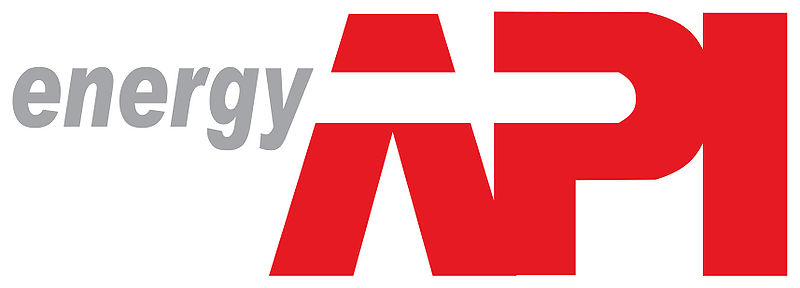 American Pedtroleum Institute (API) is the leading U.S. trade association for the oil and natural gas industry, which represents coporations involved in the production, refinement, distribution and other aspects of the petroleum industry.
American Pedtroleum Institute (API) is the leading U.S. trade association for the oil and natural gas industry, which represents coporations involved in the production, refinement, distribution and other aspects of the petroleum industry. Canadian Auto Workers Union (CAW) is the largest private sector union in Canada representing workers throughout virtually every sector of the Canadian economy.
Canadian Auto Workers Union (CAW) is the largest private sector union in Canada representing workers throughout virtually every sector of the Canadian economy.

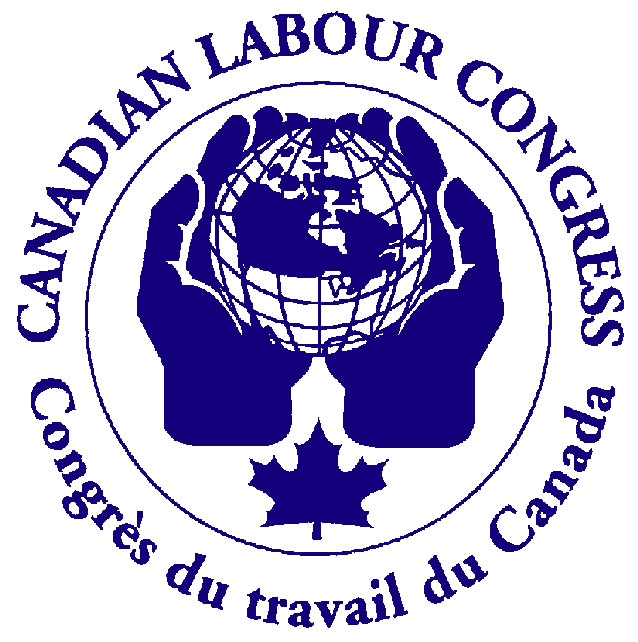

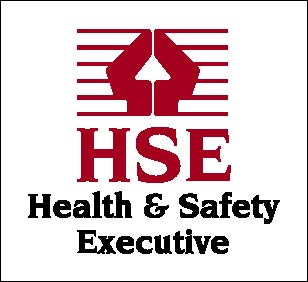


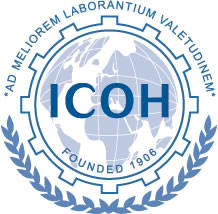



 Institute of Occupational Medicine and Environmental Health’s activities cover: research, expertise and training in public health, occupational medicine and environmental health impact assessment, diagnosis and treatment of occupational and environmental diseases, as well as implementation of health promotion and prevention of diseases.
Institute of Occupational Medicine and Environmental Health’s activities cover: research, expertise and training in public health, occupational medicine and environmental health impact assessment, diagnosis and treatment of occupational and environmental diseases, as well as implementation of health promotion and prevention of diseases.